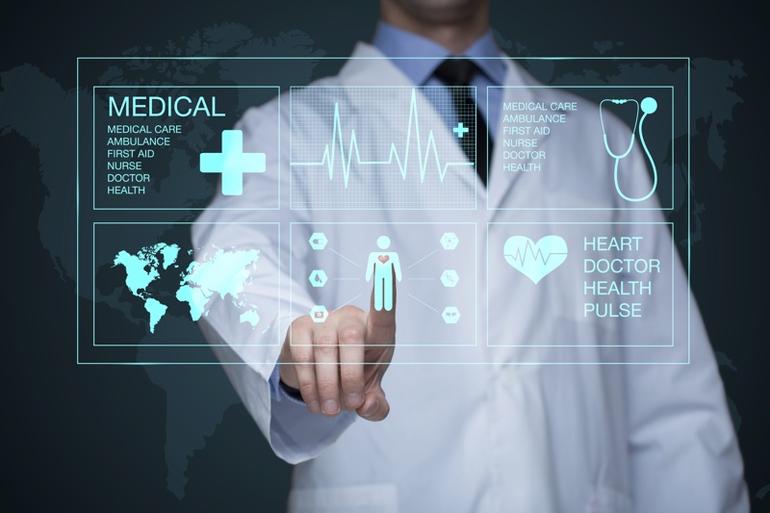The field of radiology has long stood as a bastion of medical advancement, bridging the delicate art of medical imaging with the critical precision of diagnostic interpretation. This essential medical discipline has seen a profound evolution, transitioning from the tangible tangents of film-based X-rays to the intangible innovations of the digital era, where software technology has become paramount.
In this digital age, radiology has not merely adapted to change—it has become a beacon of technological progress, markedly enhancing the quality and efficiency of patient care.

The Intersection of Radiology and Technology
Radiologists, the medical specialists who interpret images to provide valuable insights into the body’s interior mysteries, have seen their field revolutionized by cutting-edge software technology. This is not just any incremental upgrade; it’s a paradigm shift in how medical imaging is perceived and utilized. The software serves as an indefatigable, intelligent assistant, offering a set of advanced tools that sharpen the radiologist’s eye, transforming the way they investigate and diagnose.
The nature of radiological software technology is analogous to a high-end photo editing suite but on a far more complex scale. It’s designed not merely to enhance image quality but to detect subtle anomalies such as hairline fractures or the early onset of pathological changes—capabilities that are revolutionizing patient diagnostics.
These technological advancements incorporate the likes of artificial intelligence, which can independently recognize patterns and learn over time, machine learning that identifies and interprets complex patterns in imaging data, and cloud computing that facilitates the instant, secure transmission of medical images across distances.
Tele Radiology: Bridging Distances, Enhancing Care
Tele radiology emerges as a cornerstone in this technological edifice, enabling the analysis of medical images from remote locations. This innovation widens the reach of radiological expertise, allowing for prompt diagnosis and collaborative care across vast geographic expanses.
Teleradiology solutions are a critical component in emergency medicine and in regions where medical resources are scarce, offering a lifeline to high-quality diagnostic services.
Recent Advancements in Imaging Software
The recent strides in imaging software have been nothing short of revolutionary. Key among these is the Digital Imaging and Communications in Medicine (DICOM) standard, akin to the digital audio formats that transformed music sharing, which ensures that medical images are interoperable across diverse systems and locations.
Additionally, Picture Archiving and Communication Systems (PACS) serve as the digital backbone for storing, retrieving, and comparing medical images. This system is akin to a highly organized digital library that is revolutionizing how radiological information is accessed and shared.
The introduction of 3D imaging technology has changed the landscape of medical diagnostics, offering a depth and perspective to internal anatomical exploration that was previously unattainable. It has turned flat, two-dimensional images into dynamic, manipulable models, providing radiologists with a comprehensive view of the body’s internal structures.
Artificial intelligence stands as the zenith of these advancements, serving as an ever-vigilant sentinel in the detection of abnormalities. It continuously improves through machine learning, becoming ever more adept at assisting physicians in the early recognition of potentially life-threatening conditions.
Challenges and Considerations
Despite these impressive advancements, the integration of software technology in radiology does not come without its challenges. There exists a pronounced digital divide that affects equitable access to these advanced tools, with certain populations still struggling to receive even basic radiological services.
Moreover, the burgeoning issue of data security looms large. As medical imaging becomes increasingly digital, the potential for breaches of confidential patient information grows, necessitating robust security measures to protect sensitive data.
Furthermore, the rapid pace of technological progress in radiology demands that practitioners engage in continuous education. Mastery of new software tools is essential, as even the most advanced technology is only as effective as the professionals who wield it.
The Future of Radiological Software
Peering into the future, predictive analytics stands as the next frontier in radiological software, with the potential to forecast health issues before they become apparent. This could lead to a transformative shift in preventative medicine, where the risk of diseases could be anticipated and mitigated years in advance.
Radiologists are expected to transition from traditional roles into tech-savvy diagnosticians, wielding software as a detective uses clues, piecing together the puzzle of a patient’s condition with precision and insight.
Technological innovations such as blockchain promise a future where the sharing of medical images is as secure as the world’s most fortified structures, and augmented reality holds the tantalizing possibility of virtual explorations within scanned images.
Conclusion
This exploration of the technological revolution in radiology—from the significant advancements to the challenges and exciting prospects on the horizon—underscores the symbiotic relationship between software and radiological science.
If the healthcare sector continues to push the boundaries of innovation, invests in research, and supports the integration of these technologies, the future of radiology promises to be not only bright but also transformative. The field is on the cusp of a new era, one that will redefine the delivery of healthcare and the practice of medicine for the betterment of all.
